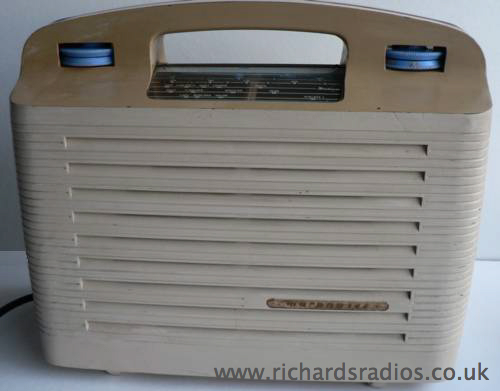

Valve Radio AC/DC 5 valve two-waveband table top painted Bakelite superhetrodyne receiver. Valve line up: 10C1, 10F9, 10LD11, 10P13 and U404 (all Mazda, apparently original)
My grandmother used to have one of these until she died in the late 60's. The paintwork on many of these sets has been removed and you may see examples which are completely brown. It was in serious need of attention when I received it (see the picture below!)

I glued the broken pieces together with 'Araldite' and as there was a hairline crack from the bottom of the case to the top I opened this up slightly to admit some 'Superglue'. The cracks were then abraded with very fine wet and dry paper and touched up with cream coloured emulsion paint tinted with water colour paint. The surface was then fixed with a watered down coat of PVA glue and finally the whole case was given a light wax polish. Yes, you can see the repair if you look carefully.
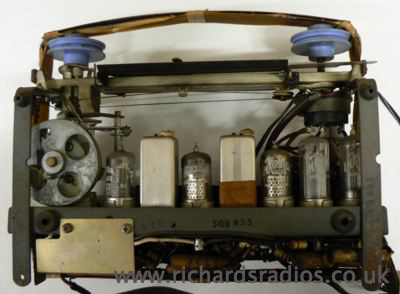
Despite its violent journey the set worked well when energised but not until I had carefully inspected the interior and gradually increased the applied voltage using a variac.
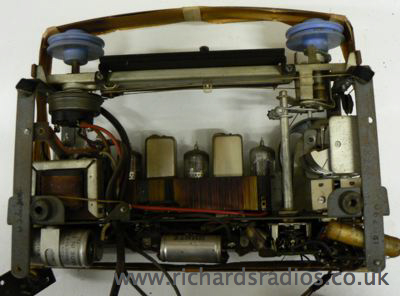
The wave change switch and volume control were noisy and I noticed (because the addition of a wire aerial did not increase the volume) that the aerial isolation capacitor had exploded at some time in the past. The capacitor was replaced and the volume control and wave change switch were given a dose of switch cleaner. The dust was brushed off and the valves cleaned and the set reassembled.
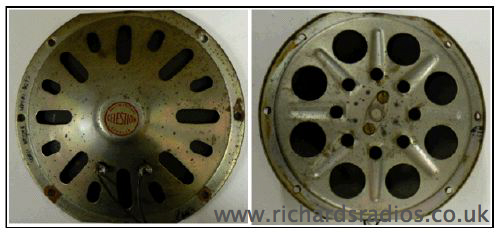
This radio has no back or no front so the loudspeaker is rather unconventional.
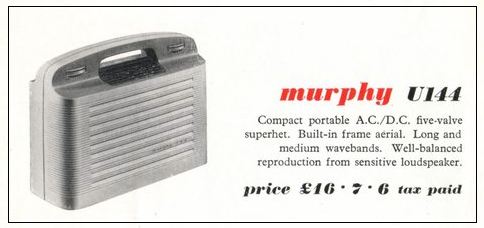
This is an advertisement from a 1953 magazine for the same radio although mine was manufactured in 1951 (the inside of the cabinet is date stamped November 1951) This model was first marketed in August 1949 at � 14 1s 1d.
History
Frank Murphy started Murphy Radio in a rented factory in
Welwyn Garden City and the first radio was produced in the summer of
1930. Murphy wanted his radios to be simple, affordable, reliable and
to look and sound good. The radios although fairly conventional were
always stylishly housed. The cabinets were designed by leading
industrial and furniture designers of the day including R D Russell
and Eden Minns who were on the team of the well renowned
furniture firm founded by Gordon Russell. More information
about the latter can be found on the website describing the museum www.gordonrussellmuseum.org/
Murphy Radio continued in business until 1970, though from 1962 it was
owned by Rank-Bush. Much more information about the firm can be gleaned
from "The Setmakers" A history of the UK radio and television industry.
BREMA 1991. These two websites are also well worth looking at:
www.murphy-radio.co.uk/
and www.classicwireless.btinternet.co.uk/
Detailed technical information on the servicing of Murphy receivers was
only supplied to accredited agents. Presumably this was intended to
ensure that repairs were carried out properly.

